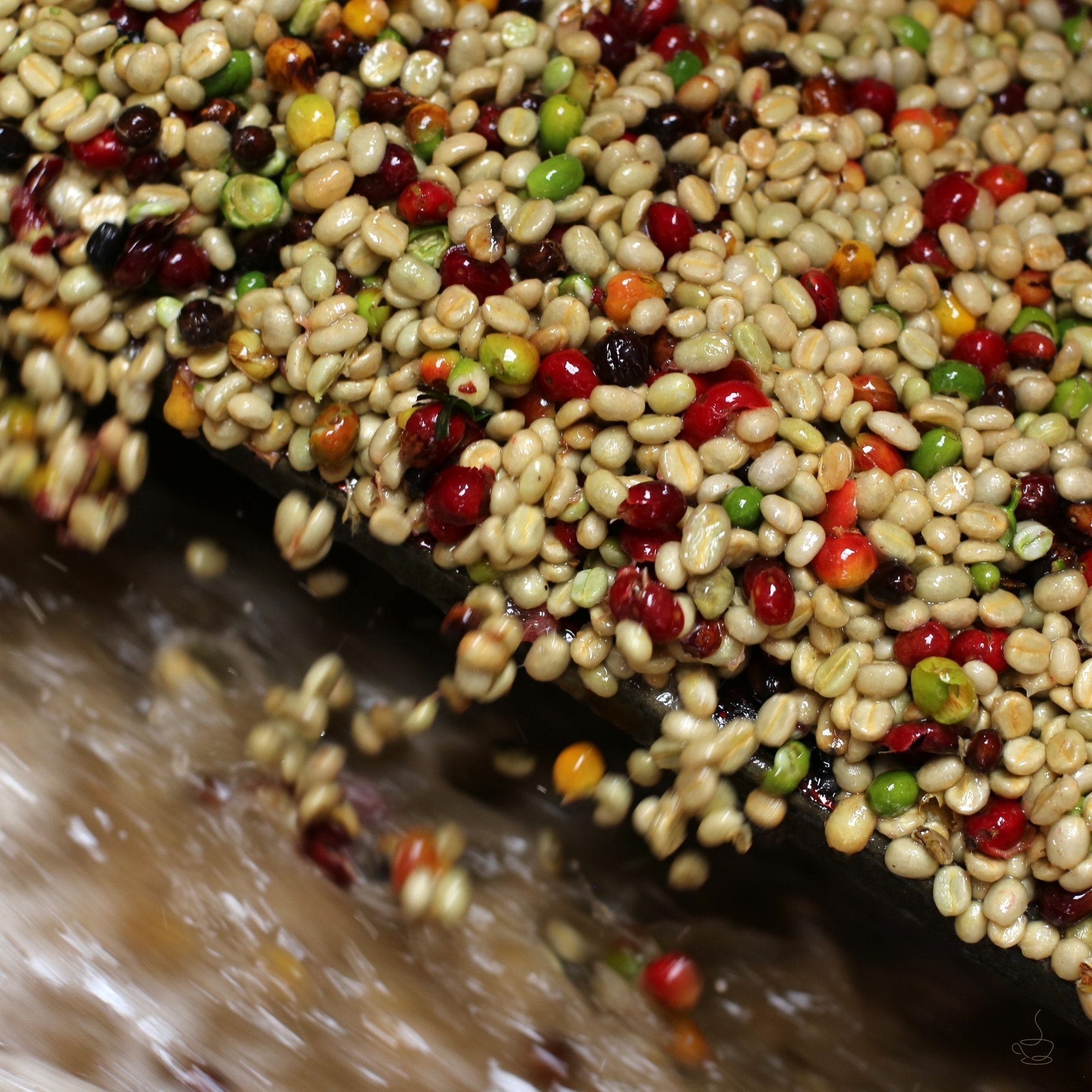What “Washed” Actually Means
In washed processing, most of the fruit is removed before drying. Cherries are pulped, the sticky mucilage is loosened through a controlled fermentation, then parchment is thoroughly washed and dried. Done well, this produces a clean, precise cup where terroir leads the conversation.
Core Steps
- Sort & float: remove underripe/defective cherries; floaters skimmed off.
- Pulp: skin and most pulp removed mechanically.
- Ferment: 8–36 hours (time & temperature monitored) to break down mucilage.
- Wash: channels/tanks rinse parchment until clean and “squeaky”.
- Dry: patios or raised beds to ~10–12% moisture, then rest before export.
How It Tends to Taste
- Clarity: distinct, separated flavor notes.
- Defined acidity: citrus, apple, grape-like structure instead of vague sourness.
- Clean sweetness: cane sugar, honey, caramel more than heavy fruit jam.
Brew Tips for Washed Coffees
- Filter / Pour-over: 1:16, medium grind, ~2:45–3:15 total.
- Espresso: 1:2–1:2.2; aim for even extraction so acidity is structure, not sting.
- Water: 70–120 ppm as CaCO₃ keeps it bright but not harsh.
Quick Facts
Washed at a Glance
Clarity
Consistency
Terroir-first
- Hallmark: clean, origin-driven cups.
- Common Origins: Colombia, Guatemala, Ethiopia, Kenya, many Centrals.
- Risk / Reward: more labor & water; better control & repeatability.
Compare Methods
Natural (Dry): dried in the cherry; bigger body & fruit, more risk if poorly managed.
Honey / Pulped Natural: some mucilage left; sits between washed and natural.
Washed: fruit removed before drying; reference style for transparent profiles.
Great Starting Points
- Colombia — caramel, red fruit, balance.
- Costa Rica — citrus, honey, clean finish.
- Ethiopia — floral, citrus, tea-like.
- Guatemala — cocoa, spice, orange zest.
